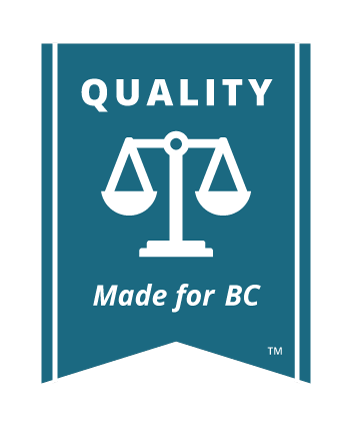Preparing a Response to Civil Claim
Before you set out to prepare a response to civil claim, you should carefully consider whether you will hire a lawyer. Defending a claim can be tricky and mistakes made in preparing a response to civil claim can have serious consequences. For more information on how to seek legal help, see Get Help.
If you are going to prepare a response to civil claim on your own, the first thing you need to do is carefully review the Notice of Civil Claim.
The document will tell you:
- The style of proceeding and registry file number. The style of proceeding (also called the “style of cause”) is how the court registry identifies your file (it includes the court file number, the name of the registry, the level of court and the names of the parties). You must include the style of proceeding on every document you prepare in the lawsuit
- The location of the registry where all subsequent documents must be filed
- The name and address of the person or lawyer who filed the document
- The service address for the plaintiff
- How long you have to reply to the document before default judgment can be taken against you
When you begin preparing your response to civil claim, refer to Rule 3-3(2).

Read the Rules
Rule 3-3(2) Contents of response to civil claim
Your response must be in Form 2, which has three key parts.
Part 1: Response to Notice of Civil Claim Facts
The Notice of Civil Claim you are responding to will set out a series of facts. These will be set out in “Part 1” of that document. You need to create a responding “Part 1” that responds to the facts alleged, sets out your version of the facts, and offers any additional facts.
Generally, part 1 of a Response to Civil Claim is divided into three:
Division 1 – Admit, Deny, or state outside your knowledge
Specifically, you need to indicate whether the facts set out in each paragraph of the notice of civil claim are:
- Admitted
- Denied or
- Outside of your knowledge

Learn More
Be careful with admissions. If you admit a fact it can be difficult to later withdraw that admission. If part of a paragraph is true, but you do not agree with another part, do not admit that paragraph. Instead deny that paragraph, and provide a new paragraph in your version of the facts.
Division 2 – Set out your version of the facts
For facts that are denied, you need also set out your own version of the facts. When you cannot agree with how the plaintiff has stated the facts, this is your chance to restate the facts from your perspective.
You only have to set out the facts. You do not have to set out how you will prove the fact. A response to civil claim needs to include “fact” but not “evidence”.
For example, if paragraph 1 of the notice of claim states that it was raining on the day of the accident, and you believe it was not, you would simply deny the allegation in paragraph 1 and state that the weather was clear on the date of the accident. You would not attach weather reports or indicate which witnesses could testify about the weather on that day.
Division 3 – Set out additional facts
Finally, you should include any additional facts that may be important to the case. It can be hard to draw a line between what are “additional facts” (Division 3) and what is the defendant’s version of the facts (Division 2). It is not overly important to worry about where to put a fact; what matters is that all the important facts are in your response at some point.
Part 2: Response to Relief Sought
In Part 2 of the notice of civil claim, it will set out what the plaintiff is asking the Court to order. You need to respond to each thing the plaintiff is asking from the Court by saying whether you consent, oppose, or take no position.
This is done by setting out three paragraphs:
- In the first paragraph you say what relief sought you consent to
- In the second paragraph you say what relief sought you oppose
- In the third paragraph you say what relief sought you take no position on
It might look like this:
- The Defendant consents to the granting of the relief sought in paragraph 3 of Part 2 of the Notice of Civil Claim.
- The Defendant opposes the granting of the relief sought in paragraphs 1, 2, 4-8 of Part 2 of the Notice of Civil Claim
- The Defendant takes no position to the granting of the relief sought in paragraph 9 of Part 2 of the Notice of Civil Claim
If you do not consent to any of the relief, you can write “NIL” or “NONE” instead of listing any paragraphs.
Part 3: Legal Basis
In Part 3, you must summarize the legal basis behind your opposition to the relief requested by the plaintiff. You should specify any rules, regulations or legislation that you are relying on.
Often, when responding to a claim, it may be adequate to simply deny that any duty or obligation existed, then deny that any was breached, then deny that you caused any loss. Many responses to civil claims set out in the “legal basis” something like:
- The defendant denies that they owed the plaintiff any duty, as alleged or at all
- In the alternative, if the defendant owed the plaintiff any duty, which is denied, they deny breaching any duty, as alleged or at all
- If the defendant breached any duty owed to the plaintiff, which is alleged, they deny the breach caused the plaintiff any loss, as alleged or at all
This sort of pleading is appropriate in many cases. However, you may also need to research the law that applies to your case in order to create a complete response to civil claims.
Determining the law that applies to your case can be hard. Learning to decide what law applies where is a large part of what is taught in law school. There are many helpful resources at the Courthouse libraries that may assist. However, getting up to speed on what law applies will take time and effort.
For more information on how to research the law that applies to your case, see Legal Research.







 JusticeEducation.ca
JusticeEducation.ca JusticeEd
JusticeEd /JusticeEducation
/JusticeEducation